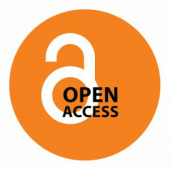Download ACOFS Vol I Issue II [Full Text]
Table of Content
(September-October)
Letter to the EditorCraniorofacial and Head Injury Management:A Residents Perspective
| |||||||||
| |||||||
ABSTRACT
Everyday, men, women and children suffer head injuries. A car accident, a fall from height or sports injury can range in severity from concussion to coma. Traumatic Brain Injury (TBI) can be fatal,dangerous and survivors, can show persistent problems that significantly affect their livelihood and
well-being. India has rather unenviable distinction of having the highest rate of head injury in the world. In India, more than 100,000 lives are lost every year with over 1 million suffering from serious head injuries, to be addressed by a handful number of craniofacial and neurosurgeons , as craniofacial neurosciences in India is new and rapidly expanding discipline and one has to be competent and razor sharp in applying its cognitive base and principles, and residency as is always described as an island in shades of grey, and in India it means higher pressure, higher stress loads, lesser patience, and longer quantum of time spent at work with sleepless nights and merciless bosses.
Key words:Neuroresidency,Craniofacial Sciences
How to cite this Article:Tomar S.S,Akheel M,Craniorofacial
and Head injury Management:A Residents Perspective:Arch
CranOroFac Sc 2013;1(2):19-21
Source of Support: Nil
Conflict of interest:No
Everyday, men, women and children suffer head injuries. A car accident, a fall from height or sports injury can range in severity from concussion to coma. Traumatic Brain Injury (TBI) can be fatal,dangerous and survivors, can show persistent problems that significantly affect their livelihood and
well-being. India has rather unenviable distinction of having the highest rate of head injury in the world. In India, more than 100,000 lives are lost every year with over 1 million suffering from serious head injuries, to be addressed by a handful number of craniofacial and neurosurgeons , as craniofacial neurosciences in India is new and rapidly expanding discipline and one has to be competent and razor sharp in applying its cognitive base and principles, and residency as is always described as an island in shades of grey, and in India it means higher pressure, higher stress loads, lesser patience, and longer quantum of time spent at work with sleepless nights and merciless bosses.
Key words:Neuroresidency,Craniofacial Sciences
How to cite this Article:Tomar S.S,Akheel M,Craniorofacial
and Head injury Management:A Residents Perspective:Arch
CranOroFac Sc 2013;1(2):19-21
Source of Support: Nil
Conflict of interest:No
Review Article
Retromolar Intubation:An Alternative Non Invasive Technique for Airway Management in Maxillofacial Trauma
|
| |||||||
|
ABSTRACT
Airway management during surgery in patients with complex maxillofacial trauma has always been a challenge for anesthesiologists, as the surgeon and the anesthesiologist share the same limited space. The necessity of intraoperative restoration of dental occlusion by intermaxillary fixation (IMF) makes the presence of oral endotracheal tube unfeasible.The purpose of our study is to evaluate the Retromolar intubation is noninvasive technique of securing airway in patients with panfacial trauma. It avoids the complications of submental intubation and tracheostomy. This review article emphasizes on the use of the retromolar intubation technique in certain cases of maxillofacial trauma. Keywords:Retromolar intubation, panfacial trauma, Retromolar space How to cite this Article:Lokesh U, Sudarshan, Jannu A, Bhattacharya D.Retromolar Intubation:An alternate noninvasive technique for airway managemnet in maxillofacial trauma.Arch CranOroFac Sc 2013;1(2):22-25. Source of Support: Nil Conflict of Interest:No |
Original ResearchIncidence of Recurrent Apthous Ulcers in a Group of Student Population in Libya: A Questionnaire Study
|
ABSTRACT
Recurrent apthous ulcers (RAUs) are most common painful mucosal oral conditions affecting 25% of the general population. Despite their high prevalence, etiopathogenesis remains unclear. However, the number and distribution and type of these cases vary from place to place. To date, no documentation has been reported regarding its occurrence and distribution and type's of recurrent aphthous stomatitis in Libyan students. Therefore the aim of the following paper was to report above mentioned clinical entity in detail with its variations in clinical occurrence in a group Libyan student's. Keywords: Diagnostic criteria, recurrent apthous stomatitis, stress ulcers. How to cite this Article: Byahatti S.M. Incidence of Recurrent Apthous ulcers in a group of student population in Libya:A Questionnaire Study.Arch CranOroFac Sc 2013;1(2):26-30 Source of support: Nil Conflict of interest:No | |||||||||
Case Report
Craniofacial Gunshot Trauma: A Case Study Approach
|
ABSTRACT
Ideal management of patients who have undergone craniofacial trauma requires a collaborative interdisciplinary approach that involves the clinical expertise of a number of related specialties.This case study reveals the efforts and the contributions to an example of such type of trauma from eminent practitioners closely involved in the challenging care and management of patients who have required reconstruction of both acute and established injuries to the craniofacial hard and soft tissue. Craniofacial trauma due to Gunshot injuries is a challenging surgical emergency. In this case report we are discussing the whole aspects of managing a case with a compound orbitocraniofacial trauma due to gunshot injury. We are describing here the presentation, investigations and treatment, as well as the aim in managing such emergencies. Keywords:GunShot Injuries,Air Filled Spaces. How to cite this Article: Kebsi IA,Dhahir MA.Craniofacial Gunshot Trauma:A Case Study. Arch CranOroFac Sc 2013;1(2):31-33. Source of Support: Nil Conflict of Interest:No | |||||||||






